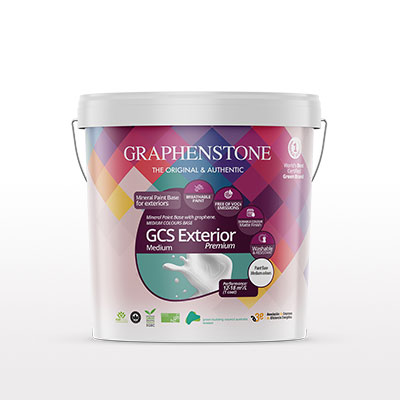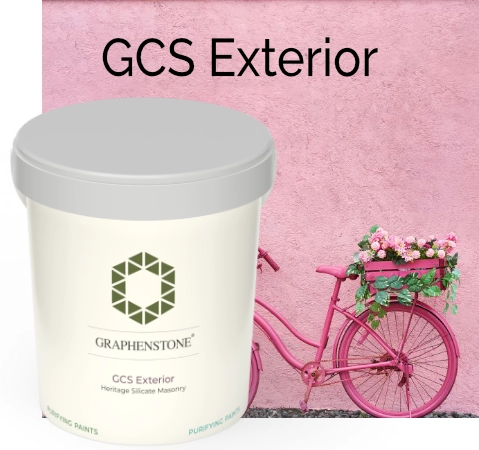 Topic Cluster Planning – Boost Topical Authority Like a Pro!
Topic Cluster Planning – Boost Topical Authority Like a Pro!
What Is The Best Skirting Board Paint For Your Home?
Written by Graphenstone » Updated on: June 17th, 2025

When it comes to home improvement, skirting boards often don’t get the attention they deserve. These unassuming features play a significant role in protecting your walls from damage and giving your room a finished, polished look. Choosing the right paint for your skirting boards can enhance both their durability and aesthetic appeal. In this article, we’ll explore the different types of skirting board paint, factors to consider when making your choice, and tips for achieving a professional finish.
Understanding Skirting Boards
Skirting boards, also known as baseboards, are the narrow wooden or MDF panels that run along the bottom of your interior walls. Their primary function is to cover the joint between the wall and the floor, hiding any gaps and providing a finished edge. However, they also protect the lower part of your walls from scuffs, kicks, and furniture bumps. Skirting boards can also add a decorative element to your rooms, with various styles and profiles available to suit different interior design schemes.

Types of Skirting Board Paint
There are several types of paint you can use on skirting boards, each with its own set of advantages and disadvantages. Water-based paints are popular for their quick drying times and low odor, making them a convenient choice for busy households. Oil-based paints, while slower to dry, offer a durable finish that can withstand heavy wear and tear. Acrylic paints, which combine the best qualities of both water and oil-based paints, are also a popular choice for skirting boards due to their durability and ease of use. Each type of paint has its own unique properties, so it's essential to choose the one that best suits your needs and preferences.
Factors to Consider When Choosing Skirting Board Paint
When selecting paint for your skirting boards, there are several factors to keep in mind. Durability is crucial, especially in high-traffic areas where the skirting boards are likely to get bumped and scuffed frequently. The finish of the paint is another important consideration; gloss, satin, and matte finishes each have their own aesthetic and practical benefits. The color of your skirting boards can either blend in with your walls or stand out as a design feature, so think about the overall look you want to achieve. Finally, consider the eco-friendliness of the paint, particularly if you are concerned about indoor air quality and environmental impact.
Water-Based Paint for Skirting Boards
Water-based paints are a popular choice for skirting boards due to their quick drying times and low levels of volatile organic compounds (VOCs), which means they emit fewer fumes and odors. This makes them a healthier option for indoor use. Water-based paints are also easy to clean up with soap and water, making the painting process more convenient. However, they may not be as durable as oil-based paints, so they might not be the best choice for high-traffic areas where the skirting boards are likely to get bumped and scuffed frequently.
Oil-Based Paint for Skirting Boards
Oil-based paints are known for their durability and smooth, hard finish, making them an excellent choice for skirting boards in high-traffic areas. They are less prone to chipping and can withstand heavy wear and tear, which is ideal if you have pets or children. However, oil-based paints take longer to dry and have a stronger odor than water-based paints, so it’s important to ensure good ventilation when using them. Cleanup can also be more challenging, as you’ll need solvents like mineral spirits or turpentine to clean your brushes and rollers.
Acrylic Paint for Skirting Boards
Acrylic paint offers a balance between water-based and oil-based paints, combining the durability and smooth finish of oil-based paint with the quick drying time and easy cleanup of water-based paint. Acrylic paint is also flexible, which means it is less likely to crack or chip over time. This makes it a good choice for skirting boards, which can expand and contract with changes in temperature and humidity. Acrylic paint is available in a wide range of colors and finishes, giving you plenty of options to match your interior decor.
Comparing Finishes
The finish of the paint you choose for your skirting boards can have a big impact on both the look and durability of the boards. Gloss finishes are highly reflective and give a shiny, polished look that is easy to clean. However, gloss finishes can highlight imperfections in the wood or paint application. Satin finishes offer a softer sheen that is less reflective than gloss but still easy to clean and maintain. Matte finishes have little to no sheen, which can help hide imperfections but may be more challenging to clean.
Color Choices for Skirting Boards
Choosing the right color for your skirting boards paint can enhance the overall look of your room. Traditional white skirting boards are a popular choice because they match most interior styles and can make rooms appear larger and brighter. However, don’t be afraid to experiment with bold colors to create a striking contrast or to highlight architectural features. When choosing a color, consider the overall color scheme of your room and how the skirting boards will coordinate with your walls, flooring, and furniture.
Eco-Friendly Options
If you are concerned about the environmental impact of your paint, there are several eco-friendly options available. Low-VOC paints emit fewer harmful chemicals, making them a safer choice for indoor use. Natural paints, made from ingredients like clay, lime, and plant oils, are another eco-friendly option. Some paint brands also offer recyclable packaging, which can help reduce waste. When choosing an eco-friendly paint, look for certifications and labels that indicate the product meets environmental standards.
Preparation Before Painting
Proper preparation is essential for achieving a professional-looking paint job on your skirting boards. Start by cleaning the skirting boards to remove any dust, dirt, or grease that could prevent the paint from adhering properly. Sand the surface lightly to create a smooth base for the paint and to remove any old, flaking paint. Apply a primer if needed, especially if you are painting over a dark color or if the skirting boards are made of bare wood. Use painter’s tape to mask off adjacent surfaces and protect them from paint splashes.
Painting Techniques
Using the right painting techniques can make a big difference in the quality of your finish. When painting skirting boards, you can use a brush for detailed work and a roller for larger, flat areas. Applying multiple thin coats of paint, rather than one thick coat, can help achieve a smooth, even finish. Allow each coat to dry thoroughly before applying the next one. Be sure to avoid overloading your brush or roller with paint, as this can cause drips and an uneven finish.
Maintenance and Touch-Ups
Once your skirting boards are painted, proper maintenance can help keep them looking their best. Regular dusting and occasional wiping with a damp cloth can help prevent dirt and grime from building up. If your skirting boards get chipped or scratched, touch them up with leftover paint to keep them looking fresh. Over time, you may need to repaint your skirting boards to keep them looking their best, especially if they are in high-traffic areas or if you change the color scheme of your room.
DIY vs Hiring a Professional
Deciding whether to paint your skirting boards yourself or hire a professional can depend on several factors. DIY painting can be a cost-effective option and can give you a sense of personal satisfaction. However, it can be time-consuming and requires some skill and patience to achieve a professional finish. If you lack painting experience or if you have a large area to paint, hiring a professional might be a better option. Professionals have the experience and tools to get the job done quickly and efficiently, and they can often achieve a higher-quality finish than a DIY job.

Conclusion
Choosing the best skirting board paint for your home involves considering various factors such as durability, finish, color, and eco-friendliness. Whether you opt for water-based, oil-based, or acrylic paint, taking the time to prepare your skirting boards properly and using the right painting techniques can help you achieve a professional-looking finish. By following the tips and recommendations in this guide, you can enhance the beauty and functionality of your home with well-painted skirting boards.
FAQs
How long does skirting board paint last?
Skirting board paint can last several years, depending on the type of paint used and the amount of wear and tear it endures. Regular maintenance and touch-ups can extend the life of your paint job.
Can you use wall paint on skirting boards?
While you can use wall paint on skirting boards, it is better to use paint specifically designed for woodwork. Woodwork paint is more durable and provides a better finish for areas that are subject to bumps and scuffs.
Is it necessary to sand skirting boards before painting?
Sanding skirting boards before painting helps create a smooth surface for the paint to adhere to, leading to a better finish. It also removes any old, flaking paint and smooths out any imperfections in the wood.
What is the best way to avoid brush marks?
To avoid brush marks, use a high-quality brush and apply the paint in thin, even coats. Lightly sanding between coats can also help achieve a smooth finish. Avoid overloading your brush with paint, as this can cause drips and an uneven finish.
How do I choose the right color for my skirting boards?
When choosing a color for your skirting boards, consider the overall color scheme of your room. White is a classic choice that suits most interior styles, but don’t be afraid to use bold colors for a striking effect. Matching the color of your skirting boards with your walls and flooring can create a cohesive and harmonious look.
Note: IndiBlogHub features both user-submitted and editorial content. We do not verify third-party contributions. Read our Disclaimer and Privacy Policyfor details.
Copyright © 2019-2025 IndiBlogHub.com. All rights reserved. Hosted on DigitalOcean for fast, reliable performance.







